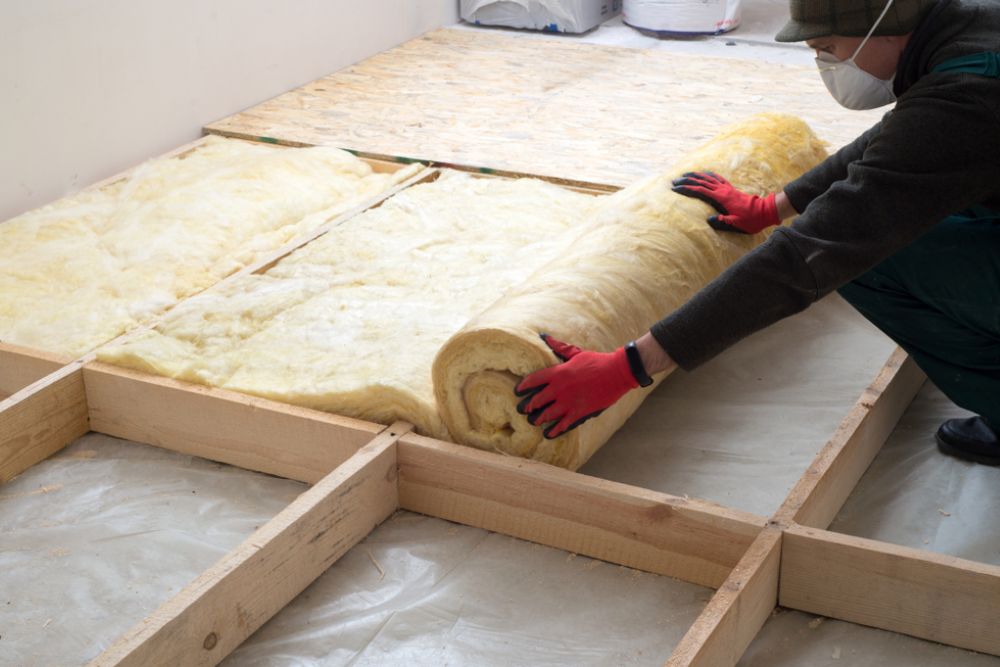As energy costs continue to rise and environmental concerns become more pressing, many homeowners are turning to eco-friendly home upgrades as a way to both reduce their carbon footprint and save money in the long run. The good news is that many of these upgrades not only benefit the environment but also lead to significant savings on utility bills. Whether you're looking to make small changes or invest in more substantial renovations, here are some eco-friendly home upgrades that can save you money and improve the energy efficiency of your home.
1. Install Energy-Efficient Appliances
One of the most effective ways to reduce energy consumption and lower your utility bills is by replacing old, inefficient appliances with energy-efficient models. Appliances such as refrigerators, washing machines, dishwashers, and dryers account for a significant portion of household energy use.
- Tip: Look for appliances with the ENERGY STAR label, which indicates that they meet strict energy efficiency standards set by the U.S. Environmental Protection Agency.
- Impact: Upgrading to energy-efficient appliances can lower your energy bills by 10-50%, depending on the appliance and its usage.
2. Upgrade to LED Lighting
Lighting is another area where you can make an eco-friendly change that results in immediate savings. Traditional incandescent bulbs are inefficient, using a lot of energy and producing excess heat. LED bulbs, on the other hand, use significantly less energy and last much longer.
- Tip: Replace all your incandescent bulbs with LED lights, which use up to 75% less energy and last 25 times longer.
- Impact: Switching to LED lighting can reduce your electricity usage for lighting by up to 85%, translating to significant savings on your energy bills over time.
3. Seal Windows and Doors
Air leaks around windows and doors can account for a large percentage of heat loss or gain in your home. Sealing these gaps can help maintain a comfortable temperature year-round without overworking your HVAC system.
- Tip: Use weatherstripping or caulking to seal gaps around doors and windows. For larger gaps, consider adding door sweeps or upgrading to double-paned windows.
- Impact: Properly sealing windows and doors can reduce heating and cooling costs by as much as 20%, helping you save on energy bills.
4. Install a Programmable Thermostat
A programmable thermostat allows you to control your home's temperature more efficiently. Instead of leaving your heating or cooling system running all day, you can program it to adjust when you're not home or while you're sleeping.
- Tip: Set the thermostat to lower the temperature in the winter when you're away or asleep, and raise it in the summer to save on energy usage.
- Impact: A programmable thermostat can save you up to 10-15% on your heating and cooling bills, reducing overall energy consumption.
5. Invest in Solar Panels
Solar panels are a significant upfront investment, but they can dramatically reduce or even eliminate your electricity bills over time. By harnessing the sun’s power, you can generate your own electricity and reduce your dependence on the grid.
- Tip: If installing solar panels seems expensive, look into government incentives, rebates, and tax credits that may help offset the initial cost. Some utility companies also offer incentives for solar panel installation.
- Impact: After installation, solar panels can save you hundreds of dollars each year on your energy bills and may even increase the value of your home.

6. Add Insulation to Your Attic and Walls
Proper insulation is one of the most cost-effective ways to improve your home's energy efficiency. Insulation helps keep warm air in during the winter and cool air in during the summer, reducing the need for excessive heating or cooling.
- Tip: Insulate your attic, walls, and floors with materials like fiberglass or spray foam. Pay special attention to areas like the attic hatch and around ducts to avoid gaps.
- Impact: Insulating your home can save you up to 20% on heating and cooling costs, making it a smart investment for year-round energy savings.
7. Use Low-Flow Fixtures
Water usage is another area where eco-friendly upgrades can make a significant difference. Installing low-flow fixtures, such as showerheads, faucets, and toilets, can reduce your water consumption and lower your water bills.
- Tip: Look for WaterSense-labeled products, which meet EPA standards for water efficiency. A low-flow showerhead can use up to 50% less water than traditional models, and low-flow toilets can reduce water usage by about 20%.
- Impact: Low-flow fixtures can save you hundreds of gallons of water each year, leading to lower water bills and contributing to environmental conservation.
8. Switch to Smart Power Strips
Electronics and appliances that are plugged in but not in use still draw power, which contributes to your electricity bill. Smart power strips can help eliminate this wasted energy by automatically turning off power to devices when they’re not being used.
- Tip: Use smart power strips for devices like your TV, computer, and kitchen appliances. These strips can detect when devices are in standby mode and cut off power to save energy.
- Impact: Smart power strips can save you 10-20% on your energy bill by reducing phantom energy consumption from idle devices.
9. Opt for Natural Light and Ventilation
Using natural light and ventilation instead of artificial lighting and air conditioning can lower your energy consumption. During the day, make the most of sunlight by opening curtains and blinds to let light in, and consider using ceiling fans or natural cross-ventilation to cool down your home.
- Tip: Install skylights, or consider larger windows or glass doors to maximize natural light and airflow. Ceiling fans are also a great way to circulate air without relying on AC.
- Impact: Reducing the need for artificial lighting and cooling can lower your energy usage and help you save money on electricity bills.
10. Replace Your Roof with Cool Roofing Materials
Traditional roofing materials absorb heat, which can increase the temperature of your home and lead to higher cooling costs. Cool roofing materials reflect more sunlight, reducing the amount of heat absorbed and helping to keep your home cooler.
- Tip: Consider installing cool roofing materials such as reflective shingles or coatings. These materials are designed to reflect more sunlight and absorb less heat.
- Impact: A cool roof can reduce your cooling energy costs by up to 15%, making it a great long-term investment for hot climates.
Making eco-friendly home upgrades not only helps you reduce your carbon footprint but also leads to significant savings on your utility bills. From installing energy-efficient appliances and insulation to utilizing renewable energy sources like solar panels, there are plenty of ways to make your home more sustainable while saving money. Start small by focusing on one or two projects, and over time, you’ll see the cumulative benefits in both your energy bills and your home’s overall value. Investing in these upgrades today can create a more comfortable, cost-effective, and eco-conscious living environment for years to come.


